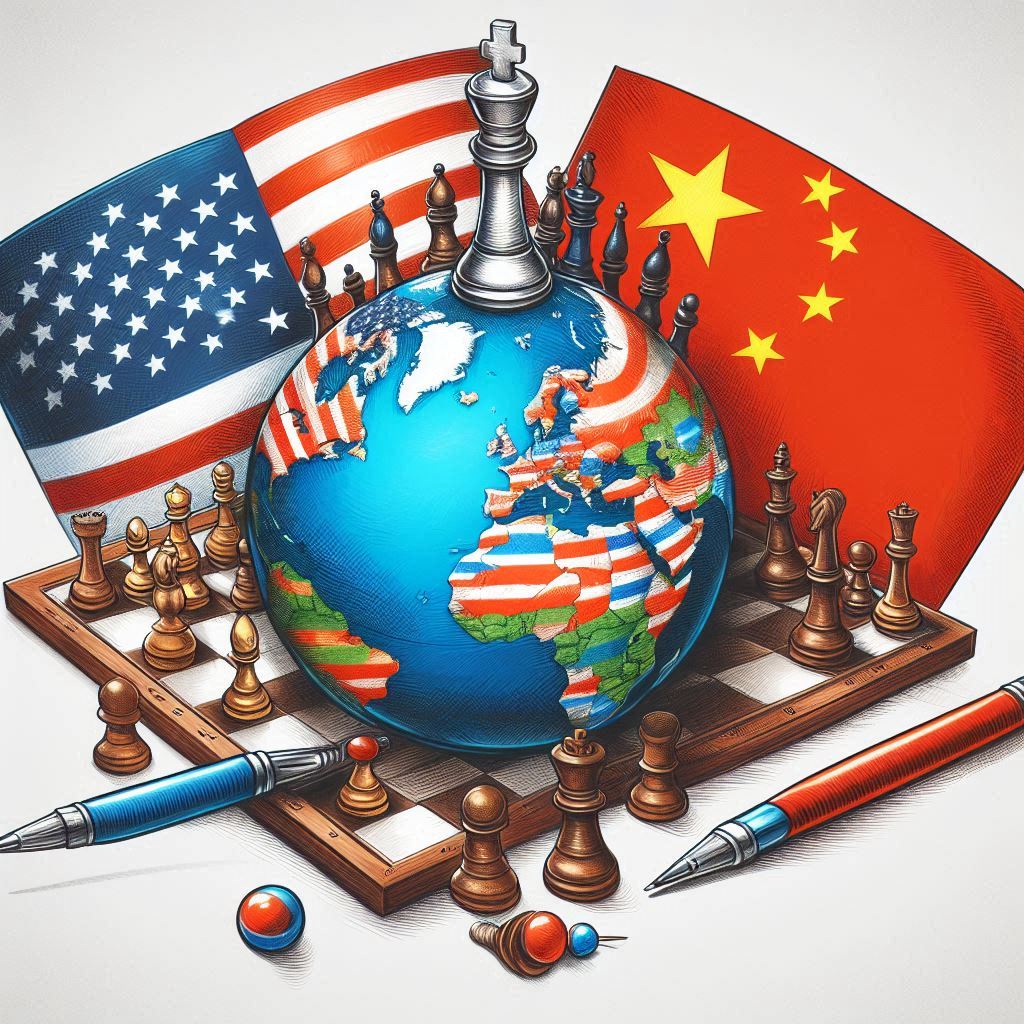
Category: Russia
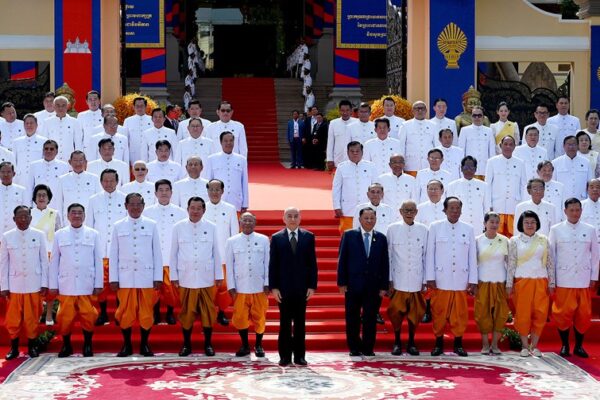
Why Laos’ Communists cannot do anti-corruption
Corruption is often seen as a byproduct, a quirk, of a political system. But in many authoritarian states, it is actually the modus operandi. Consider what binds a political structure together. How do you make sure that lowly officials in the provinces listen to their masters in the capital? How do you instill the sense that everyone is working together for the same cause, that all participants aren’t just a bunch of self-interested, warring individuals? One way is through terror. Officials listened to Joseph Stalin, the Soviet dictator, and his Politburo because they feared for their lives. Another is through a common sense of purpose. This could be ideological. Everyone works towards the same goals because they believe they are creating a better world. Or it could be existential, such as everyone pulling together during wartime. Or it could be transactional, as we see in meritocracies, with everyone accepting the norms and hierarchies of the political structure because doing so means they stand a chance of advancing up the political ladder. Cambodia’s King Norodom Sihamoni, front center, and members of Cambodia’s government pose with newly elected members of parliament during the opening ceremony at the National Assembly building in Phnom Penh on Aug. 21, 2023. (Tang Chhin Sothy/AFP) However, another method is through corruption, what some academics would call “rent-seeking”. Low-ranking officials in the provinces pay heed to their superiors in the capital because they are all part of vast patronage networks. Low-ranking officials are loyal to their patrons in return for financial benefits and promotion, while the higher-ranking patrons in government are able to get others to follow their policies because they control the fortunes of those lower down the hierarchy. Moreover, corruption provides something of a common purpose, a common understanding, amongst all levels of the political structure. Everyone knows how the game is rigged and that they have to pay fealty to those who control the most important patronage networks in order to advance up the hierarchy. Indeed, graft instills a sense of loyalty. When harmonized, as in Cambodia, a rent-seeking system ensures that all political grandees have just enough access to financial rewards and that graft is spread somewhat equitably so that there are no major internal frictions. That begs the question of how anti-corruption campaigns can work in authoritarian states that previously had rent-seeking systems. Vietnam is a good example. Before 2016, the Communist Party of Vietnam held its hierarchy together in large part through corruption. This was partly because of the decentralization that occurred in the 2000s, which made it much more difficult for the central party apparatus to control what was happening in the provinces and districts. More importantly, ideological factors that had previously held the Communist Party together began to fade. Rent-seeking cadres By the early 1990s, when Hanoi made peace with Beijing, Vietnam was for the first time in half a century unthreatened by a foreign power. No longer could the CPV compel internal cohesion within its ranks through rally-around-the-flag appeals to cohesion and unity At the same time, because the Vietnamese government became more professionalized, it meant bringing in non-communist officials. This, added to the public’s disinterest in socialist ideals, especially after the capitalist reforms in 1986, meant that communist ideology no longer functioned as a way to bind the political structure together. And the CPV was no longer the sole arbitrator of nationalism. In the early 2000s, a popular strain of nationalism emerged among the public that accused the party of being unpatriotic for selling Vietnamese land to foreign (mainly Chinese) investors, which culminated in the momentous Bauxite protests of 2009. Amid these social changes, a new generation of rent-seeking apparatchiks emerged – personified by Nguyen Tan Dung, who became prime minister in 2006 – who cast aside ideology and nationalism and instead embraced graft as a way of building their own personal power and binding the splintering party apparatus. This led to a reaction, however, from the more ideological factions of the party, led by Nguyen Phu Trong, who became party chief in 2012. Vietnam’s Communist Party general secretary Nguyen Phu Trong, left, gestures as he arrives at the National Assembly in Hanoi on Jan. 15, 2024. (Nhac Nguyen/AFP) However, it was only when he defeated Dung in the 2016 National Congress that Trong launched his anti-corruption campaign. Even then, dismissing or jailing the corrupt was only one side of the coin. Far more important, as Trong has acknowledged, has been his so-called “morality campaign”. Since 2016, he has reinstated socialist ideology and ethics as the defining factor of party membership. To be promoted now, an official must at least rhetorically profess fealty to socialism and demonstrate a clean, hard-working lifestyle. At the same time, Trong has re-centralized power, taking away authority from the provincial officials and giving it to his small clique in Hanoi, which is one reason why he has struggled to find a successor, given that he has now cloaked his own position in so much power — perhaps the most since 1986 — that it has become even more precarious and existential if the CPV selects an unfit successor. So what about next-door Laos? Similar to Vietnam, it embraced decentralization in the 1990s, stripping the apparatchiks in Vientiane of some of their authority. Given its geography, the central party apparatus in Laos has always been unable to fully control what local officials do. Its capitalist reforms in the late 1980s also stripped socialist ideology as a common cause within Lao People’s Revolutionary Party (LPRP). In fact, the LPRP has long been less ideological than its Vietnamese counterpart. Anti-corruption failure Nationalism, too, has disappeared. Indeed, the growing anti-Chinese chorus of Laotians has led many to regard the LPRP with disdain, believing it has allowed foreign businesses to destroy the environment and made Laotians second-class citizens. Unlike in Vietnam, however, anti-corruption efforts have failed in Laos. When he became prime minister in 2016, Thongloun Sisssoloth vowed to unleash a vast anti-graft campaign, but it had…
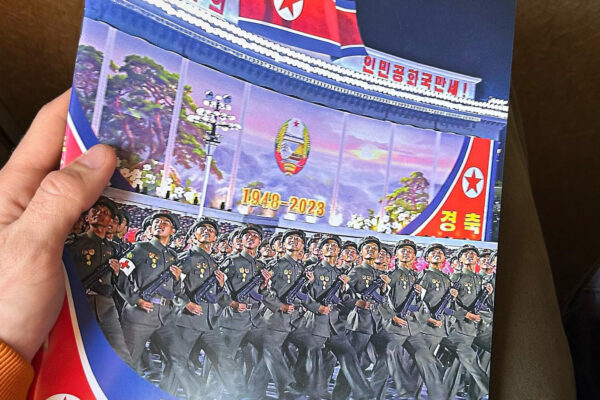
‘The whole trip was a complete shock and surprise.’
Ilya Voskresensky is a travel blogger from St. Petersburg, Russia, who last week joined the first foreign tour group to visit North Korea in four years. In January 2020, North Korea closed its border with Russia and China, and suspended all trade, fearful that the coronavirus would wreak havoc over the country. Tourism and the foreign cash generated by the industry came to a screeching halt. The cash-strapped North Korean government has been itching to restart tourism and actively recruited the first foreign tour group that would visit the country since before the pandemic. The 97 Russians arrived on Feb. 9 and spent four days and three nights in the capital Pyongyang and at the Masikryong ski-resort in the eastern province of Kangwon. Following the visit, RFA Korean’s Jamin Anderson interviewed Voskresensky, who said that the North Korean authorities closely watched him and tried to limit his freedom to film from the moment he boarded the Pyongyang-bound Air Koryo plane in the Russian Far Eastern city of Vladivostok. The interview has been edited for length and clarity. RFA: How did you decide to take this trip? Were there any concerns about the dangers involved? Who did you travel with? Voskresensky: I decided to go on a trip as soon as I heard that North Korea was opening and there would be a tour for Russian citizens there, and I like making films about my travels for my YouTube channel. So I realized that this was an ideal opportunity to shoot something interesting and unique, something that I had never seen or felt before in my life. I wanted to see this kind of closed country, and to have a look at how that isolation and [North Korea’s] conservative culture affects tourism, the people, and the country in general. Of course, I had concerns because I read a lot of stories, watched films about the DPRK and understood that many different things could happen to me there. Furthermore, they really don’t like those who’re constantly filming, and I was going there just to film. But we did it anyway. There were still concerns. I went there with a friend of mine. He’s my cameraman, and the two of us were there together. A magazine displayed on the Korean Air flight. Ilya Voskresensky mentioned that the first 13 pages were all about Kim Jong Un, and he felt that North Korea was a country of “the cult of personality.” (Courtesy Ilya Voskresensky) RFA: Did you encounter any unique experiences or any kind of cultural shock during your trip? Voskresensky: The whole trip was a complete shock and surprise. The fact that in Pyongyang, a large city where 3 million people live, there are very few people on the streets and there are practically no cars at peak hours – not at 17:30 in the evening nor at 7:30 in the morning. You go through the streets, and they are empty and it’s shocking. It’s also shocking how the cult of personality has simply surpassed all levels. When you open a publication, like the flight magazine on the airplane, the first 13 pages had only the face of one person [Kim Jong Un] and this is also shocking. I didn’t see anything culturally unusual, but I soon saw the oddities of the regime, the way it changes the country. The closedness of this country, which absolutely preserves its ideology. It was like being teleported to the past. Sometimes you look at pictures and there are people driving past or some kind of construction site and you have the feeling that this is all AI-generated around propaganda slogans, posters, and portraits of leaders, and it is simply astounding. Ilya Voskresensky snowboards at Masikryong Ski Resort in North Korea. Voskresensky said that filming and shooting at the resort was completely unrestricted, allowing him to document his snowboarding adventures. (Courtesy Ilya Voskresensky) RFA: What freedoms and restrictions did you experience during the trip? When they imposed restrictions, what reasons were given? Voskresensky: We encountered restrictions literally immediately on the plane. I took my camera to film how I entered the plane and I was immediately told off. When we took our seats a man was there sitting with us. He was just sitting doing something on his phone, taking pictures of the porthole. We hadn’t even left Russia yet. A member of the cabin crew came up, it was a North Korean airline, so the flight attendant just came, took the man’s phone and started looking through his photos. He looked and deleted what he didn’t like. This was the first impression we got, and we hadn’t even left the country. We were still in Russia, but sitting in a DPRK airplane. [Once we were in North Korea] we were banned from filming construction sites as well as shabby-looking buildings. [Our guide] said that these houses are being demolished and there would be new houses, but it was obvious that there were people still living in them. They only allowed us to shoot picturesque, beautiful scenes. For example, at the ski resort where we were, there were no restrictions on filming at all, and we filmed absolutely everything. We were also banned from filming military sites, but that’s something I understand, and I didn’t even ask why it’s not allowed. There was a ban on walking around the city on your own, meaning you couldn’t leave the hotel and go for a walk around the city. I asked why. I wanted to go for a walk, but I was told, ‘You don’t know the Korean language and you will have problems.’ You couldn’t film construction sites, because they supposedly look ugly, and they want to show their country as a beautiful place. It was impossible to film, as I already said, building compounds where people live. But when they brought us to certain city squares, on the contrary, they happily wanted us to take photographs. And as I said before, when we flew to the…
US urges China to push Iran to pressure Houthis over Red Sea attacks
U.S. National Security Adviser Jake Sullivan has asked Chinese Foreign Minister Wang Yi to use Beijing’s influence on Iran to push it to stop the Houthis in Yemen from attacking Red Sea trade routes. The appeal came during two days of meetings in Bangkok between the pair, according to a senior Biden administration official who spoke on condition of anonymity according to rules set by the White House. Over 12 hours, the pair also discussed Russia’s invasion of Ukraine, Myanmar’s civil war, North Korea, Israel’s war with Hamas, the South China Sea, fentanyl and artificial intelligence, the official said. It was their first meeting since Oct. 26, when Wang visited Washington in the run-up to Chinese President Xi Jinping’s trip to San Francisco in November for the Asia-Pacific Economic Cooperation summit, during which he also held direct talks with U.S. President Joe Biden. The official said the meeting was meant to build on the commitments made during that summit, including to reinstate military-to-military talks and to stem illicit Chinese exports of precursors for fentanyl, which has been called a leading cause of death for American adults. A working group on counternarcotics would be established on Tuesday and both Military-Maritime Consultative Agreement Meetings and talks about regulating artificial intelligence would be held in the Spring. “The two sides are committed to continuing these strategic channels of communication,” the official said, adding there would be “a telephone call between the two leaders at some point in the coming months.” Diplomatic telephone On the apparently widening conflict in the Middle East that began with the attack on Israel by Hamas on Oct. 7, the White House official said Sullivan had pressed Wang to use Beijing’s influence on Iran to push it to end attacks by Houthis on trade ships transiting the Red Sea. The Houthis’ latest attack took place Friday and this time directly targeted a U.S. warship, the USS Carney, which was patrolling the area to try to prevent further attacks in the lucrative trade route. Both Hamas and the Houthis have been labeled “proxies” of Iran by the United States, with Tehran not viewed as having direct control of either group but being accused of funding and training both. The Houthis, meanwhile, are accused of targeting trade ships off Yemen’s coast in response to Israel’s invasion of Hamas-controlled Gaza. As a major trading nation, China had its own interests in stopping the attacks on the Red Sea route and had the ability to pressure Iran as one of the biggest buyers of its oil, the White House official said. “We would characterize both the economic and trade relationship as giving Beijing leverage over Iran to some extent. How they choose to use that, of course, is China’s choice,” the official said. “Iran’s influence over the Houthis, and the Houthis’ destabilization of global shipping, raises serious concerns not just for the U.S. and China but for global trade,” they added. “There should be a clear interest in China in trying to quiet some of those attacks.” The civil war in Myanmar was also discussed by Sullivan and Wang, building off talks between Sullivan and Thai Prime Minister Srettha Thavisin on Friday, during which the official said Sullivan “stressed the importance” of getting humanitarian aid into Myanmar. However, the official said the United States was less hopeful about China’s assistance in pushing North Korea to end its growing nuclear weapons program or its recent provision of ballistic missiles to Russia. “I’m not sure I would characterize anything recently as constructive,” the official said, adding the United States still hoped China would come round to helping “bring us back to the path of denuclearization.”
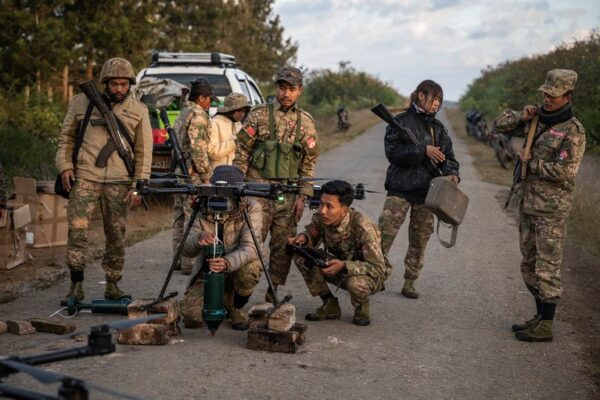
The Myanmar military’s air superiority is slipping away amid sanctions and opposition attacks
One of the most important setbacks for Myanmar’s military since an opposition alliance launched Operation 1027 last October has been the loss of three different aircraft: two jet trainers and an Mi-17 heavy-lift helicopter. An Mi-35 attack helicopter was also lost in 2023. The Myanmar military should have total air superiority. For the first two years of the conflict, the opposition National Unity Government’s (NUG) best air defense was doxing Air Force pilots – publishing their addresses, as part of an assassination campaign. Gradually, the NUG’s People’s Defense Force militias began to erode the junta’s air superiority by effectively deploying armed drones. Significantly, we’re now seeing Ethnic Resistance Organizations (EROs) begin to deploy air defenses, at a time when the junta has become even more dependent on air attacks. That increased tempo of operations requires more maintenance on overworked airframes. Fighters of anti-junta Mandalay People’s Defense Forces prepare a drone with an explosive-drop amid clashes with Myanmar junta forces in northern Shan State, Dec. 11, 2023. These military junta losses matter for three reasons. First, while not small by regional standards, the Myanmar Air Force (MAF) certainly does not have excess capacity. At the top end, it has some 31 SU-29s and four recently delivered SU-30s from Russia. The recently delivered seven JF-17s multi-role fighters, jointly produced by China and Pakistan, are reportedly already grounded due to cracks in their airframes and other maintenance issues. Airworthiness questions On paper, Myanmar has approximately 40 other jet fighters, but these are old, Chinese-produced knock-off Russian jets from the 1990s. They are well beyond their service life. The MAF is thought to have 20 Nanchang Q-5s, the Chinese version of the MiG-19, down from the 36 it imported from 1994-2001. It also has some 21 Chengdu J-7s, a Chinese produced MiG-21. That’s down from some 60 that it had purchased from 1990-1999. It’s unclear how many of these fighters are still airworthy. Myanmar’s military has relied on its 18 Russian-built Yak-130 trainers for much of its combat operations. Since the February 2021 coup, Myanmar has taken delivery of some six Guizhou JL-9 jet trainers, referred to as FTC-2000G, which have a spotty performance and safety record. A fighter of anti-junta Mandalay People’s Defense Forces pilots a drone near the frontline amid clashes with Myanmar junta forces in northern Shan State, Dec.11, 2023. (AFP Photo) The MAF also flies an unknown number of Chinese K-8 trainers that can be used for ground support. Second, we should also assume that given sanctions on the Singapore-based companies that have been the key importers of spare parts, the overall lack of foreign exchange available to the junta, and other supply chain issues, including those caused by Russia’s war in Ukraine, that around 20% of the aircraft are probably not operational. In December 2023, the sanctioned director of Sky Aviator and two others were caught trying to smuggle 508,925 Singapore dollars (US $382,380) in cash out of that city-state. Sky Aviator, which has an office in Singapore, had a large contract to purchase spare parts for the air force. Another sanctioned firm, Sky Royal Hero Company Limited, has the contract for the maintenance and spare parts for servicing the Russian jet fighters. For nearly three years, the MAF has been flying at increased tempos without the scheduled maintenance they require. Airstrikes ramping up The military’s promised counter offensive has not materialized. Over 4,000 troops have surrendered since Operation 1027 began, and well-documented recruitment issues mean the military does not have a sufficient number of troops to launch ground offensives across the multiple battle zones, which has forced them to rely on long range artillery and air strikes. An independent research firm documented 336 airstrikes in December 2023, alone, with nearly half against the Three Brotherhood Alliance, the group of ethnic armies behind Operation 1027.. The loss of one of their 12 already over-taxed heavy lift helicopters is another important setback for the military’s counter-offensive. One of their tactical advantages has been air mobility and resupply, especially given their loss of key roads. Although the Kachin Independence Army (KIA) claims to have shot down the Guizhou JL-9/FTC-2000G on Jan. 17, there is little evidence to support this, Video footage that shows the plane falling from the sky, without smoke or any other sign of hostile fire, indicates likely engine failure. Myanmar Air Force Jet fighters drop bombs during military exercises in Ayeyarwady delta region, Feb. 2, 2018. (Lynn Bo Bo/Pool via AP) That leads to the third implication: The MAF is losing aircraft to hostile fire. While the military claims that it was a technical malfunction that brought down a K-8 trainer, Karenni forces claim to have shot it down. The KIA claims to have shot down an Mi-17 transport helicopter, killing all six crew members on Jan. 3. Both helicopters and the trainers, especially when they are being used for ground attacks, are vulnerable to small arms fire. Eyes on Beijing But these developments also beg the question: What weapons are being used to down the aircraft? The only ethnic armed group that is known to have shoulder-launched surface-to-air missiles (known as MANPADs) is the United Wa State Army (UWSA). Until very recently, the UWSA has sat out the conflict, neither supporting the junta nor joining the NUG. It recently declared its neutrality in the Three Brotherhood Alliance’s Operation 1027, though it did receive two townships from them. A man looks on at homes destroyed after air and artillery strikes in Mung Lai Hkyet displacement camp in northern Kachin state, Oct. 10, 2023. (AP Photo) Though the UWSA has quietly sold weapons to other ethnic armies and the NUG, it has, to date, refrained from selling MANPADs. Has that changed? And if so, why now? It was long believed that they would not sell the weapons for fear of angering China. So did China approve the transfer, or are the groups now willing to incur Beijing’s wrath? The KIA claims that they shot down the Mi-17…
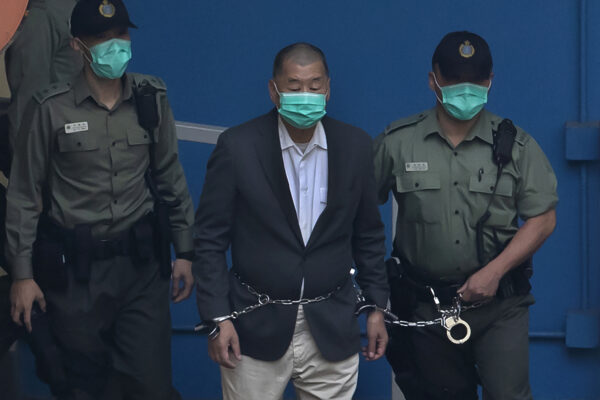
China is the world’s worst jailer of journalists, CPJ says
China is the worst jailer of journalists in the world, a report by a New York-based watchdog said, and nearly half of the journalists behind bars in the country are Uyghurs who reported on the persecution of the mostly Muslim group in Xinjiang. In its 2023 prison census, conducted on Dec. 1, the Committee to Protect Journalists, or CPJ, found that there was a spike in arrested journalists, with 320 believed to be behind bars – close to a record high. More than half of those jailed journalists were charged with false news, anti-state or terrorism charges in retaliation for their coverage, the group’s research found. China led all countries, with 44 journalists in prison, accounting for 32% of the worldwide total. Following closely behind was Myanmar, with 43. Vietnam was fifth on the list with 19, ahead of Iran and just behind Russia. Hong Kong media mogul and pro-democracy activist Jimmy Lai, is escorted by Correctional Services officers to a Hong Kong court appearance, Dec. 12, 2020. (Kin Cheung/AP) “China has long ranked as one of the world’s worst jailers of journalists,” the report said. “Censorship makes the exact number of journalists jailed there notoriously difficult to determine, but Beijing’s media crackdown has widened in recent years, with 2021 marking the first time journalists from Hong Kong were in jail at the time of CPJ’s census.” In addition to Hong Kong, Xinjiang was another chief area of concern, according to the report. Of the 44 imprisoned journalists in China, 19 are Uyghurs. Among them is Ilham Tohti, a professor who was also the founder of the news website Uighurbiz. Tohti was arrested almost exactly 10 years ago, and later sentenced to life in prison on charges of separatism. Another is Qurban Mamut, the former editor-in-chief of the popular Uyghur journal Xinjiang Civilization. Mamut went missing in November 2017 and RFA learned in 2022 that he was sentenced to 15 years in prison for “political crimes.” Media gather outside the offices of Stand News in Hong Kong on December 29, 2021, after police raided the office of the local media outlet and arrested six current and former staff. (Daniel Suen/AFP) “Chinese authorities are also ramping up the use of anti-state charges to hold journalists, with three out of the five new China cases in CPJ’s 2023 database consisting of journalists accused of espionage, inciting separatism, or subverting state power,” the report said. “Many journalists charged are ethnic Uighurs from Xinjiang, where Beijing has been accused of crimes against humanity for its mass detentions and harsh repression of the region’s mostly Muslim ethnic groups,” it said. ‘Silencing minority voices’ The disproportionate number of jailed Uyghur journalists mirrors the situation in Xinjiang, Beh Lih Yi, the CPJ’s Asia program coordinator told RFA Uyghur. “Nearly half of the journalists behind bars in China in 2023 were Uighur journalists. They have been targeted under vague charges such as inciting separatism or being ‘two-faced,’ a loose term Chinese authorities often use to punish those they see as publicly supporting government policy but secretly opposing it,” said Yi. “The media repression highlights the Chinese government’s harsh attempt to silence minority voices and independent reporting – even as Beijing repeatedly rejected claims of widespread human rights abuses in Xinjiang,” he said. A giant screen in Beijing shows Chinese President Xi Jinping visiting Xinjiang Uyghur Autonomous Region July 15, 2022. (Tingshu Wang/Reuters) He said that long-term sentences for Uyghur journalists were “outrageous and cruel,” and called on the Chinese government to release all its imprisoned journalists and allow all journalists to freely report in Xinjiang. The report proves the importance of the work of Uyghur journalists, Zubayra Shamseden of the Washington-based Uyghur Human Rights Project said. “It is clear from the imprisonment of Uyghur journalists that China doesn’t want the international community to know anything about Uyghurs,” said Shamseden. “Uyghur journalists report on Uyghur issues. They are the voices of the Uyghur people in the world. By imprisoning Uyghur journalists, China is attempting to crush the voices of Uyghurs.” The report also noted that Israel saw a huge spike of journalist jailings last year, with all those known to be behind bars on the date of the census having been arrested in the West Bank. Additional reporting by Mamatjan Juma. Edited by Malcolm Foster.
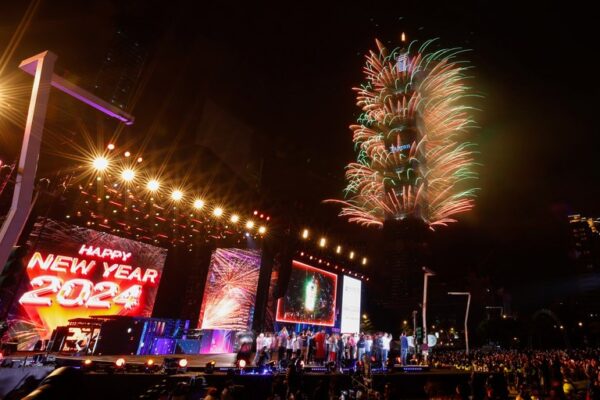
Only 3% of Taiwanese see themselves as primarily Chinese: US survey
Only 3% of adults in Taiwan see themselves as primarily Chinese, despite Beijing insisting that Taiwan is a Chinese province and should be reunified with the mainland, a new survey has found. Some 67% of respondents to the survey said they were primarily Taiwanese and not Chinese, while 28% think of themselves as both Taiwanese and Chinese, U.S. Pew Research Center said in its report on Tuesday. 2% did not respond. In total, 2,277 people took part in the survey which focused on how people in Taiwan think of their identity. Interviews were conducted via telephone, and the margin of error was 2.64. To the question “How emotionally attached do you feel to the country of China,” 11% of respondents said they are “very emotionally attached” while 32% answered “not at all attached.” Adults under the age of 35 are especially likely to identify as solely Taiwanese (83%), and women are more likely than men to do so (72% vs. 63%). Pew conducted the survey in the period between June 2 to Sept. 17, 2023, several months before the election that saw Lai Ching-te from the ruling Democratic Progressive Party (DPP) elected president. The DPP, however, lost its majority in the 113-seat legislature after the Jan. 13 election to the more pro-Beijing Kuomintang. Tied to politics “Identity in Taiwan is tied to politics,” Pew’s researchers said, “Those who consider themselves primarily Taiwanese are most likely to align themselves with the DPP.” “Meanwhile, those who regard themselves as both Chinese and Taiwanese, or as primarily Chinese, are more aligned with the Kuomintang (KMT),” they said. At the parliament, the KMT won 52 seats to the DPP’s 51 seats. “Few in Taiwan are happy with how things are going there today,” the report said. Some 24% of respondents expressed satisfaction, while 32% were dissatisfied and 37% were neither satisfied nor dissatisfied. Taiwan celebrates the arrival of 2024 with fireworks at Taipei 101 Tower in Taipei, Taiwan January 1, 2024. (Reuters/Ann Wang) Those who support the ruling DPP, as well as those who consider themselves primarily Taiwanese, were more likely to express satisfaction with how things are going in Taiwan. Only 10% of those who support the opposition KMT said they were content with the current situation. Most people across age groups and political alignments, even those who identify as primarily Chinese, consider China’s power and influence a threat to Taiwan, according to the survey. The survey found that 66% categorize it as a major threat, more than those who said the same about the United States (45%) or Russia (25%). Earlier research found DPP supporters favor the U.S. over China, while KMT supporters favor China over the U.S., the report added. Edited by Mike Firn and Taejun Kang.
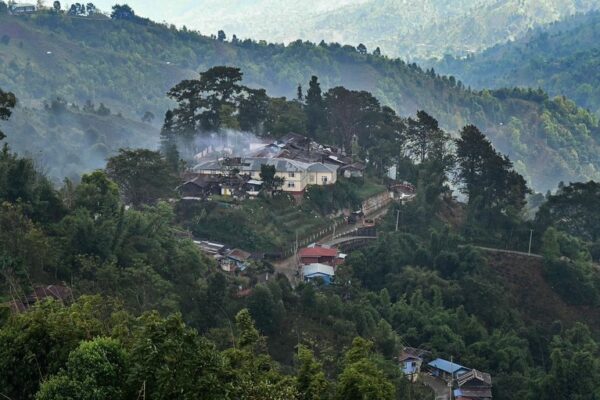
Time is not on Myanmar junta’s side, almost 3 years after coup
In his televised New Year’s address to the country, Myanmar’s junta leader Min Aung Hlaing vowed to prioritize economic growth in 2024, apportioning all the blame for the country’s sharp economic contraction on the opposition his coup ousted almost three years ago. Min Aung Hlaing made no mention of the military’s setbacks since the Three Brotherhood Alliance of ethnic armies in northern Myanmar launched their offensive on October 27, 2023. And while the losses, which include over 30 towns and the surrender of over 3,000 troops are real, the continued economic crisis remains the junta’s single largest vulnerability. Smoke rises from a burning Myanmar military compound amid clashes with armed group Ta’ang National Liberation Army in northern Shan State, Dec. 13, 2023. (AFP Photo) The economy has shrunk by 10-12 percent since the Feb. 1, 2021 coup that deposed the National League For Democracy-led government. In a recent report, the World Bank predicted the country would only see 1% growth in 2024, given the “broad-based slowdown across productive sectors including agriculture, manufacturing, and trade.” Over half the population is living beneath the poverty line, while the World Bank found that 40% of surveyed families saw a decline in income in 2023 compared to 2022. The kyat currency has lost half of its value since the coup and it now appears that the State Administrative Council (SAC), as the junta is formally known, has given up any hope of controlling it. Forex woes In early December 2023, the Central Bank of Myanmar announced that it would no longer fix the exchange rate, allowing the currency to trade at market prices. This was a tacit acknowledgement that the gap between the official rate of 2,100 kyat per U.S. dollar and black market rate of 3,500 kyat per greenback was too large to ignore, and that the regime no longer had foreign exchange reserves to prop up the declining kyat. The shortage of dollars also portends a further energy crisis. Electric black- and brown-outs have been common throughout the country, even in Naypyidaw. And shortages of gasoline and diesel increased in late-2023. Fighters of Ta’ang National Liberation Army search a building after running over a compound belonging to Myanmar junta military in Shan State, Dec. 12, 2023. (AFP Photo) The SAC had subsidized energy imports by making dollars available to politically-connected energy importers at below market rates in order to ensure a steady supply of fuel. The junta no longer can afford that. In late December, there were reports of tankers refusing to unload in Yangon’s Thaliwa port until they were paid, indicating a dire shortage of dollars. The regime has been encouraging border trade with China and Thailand, which is conducted in Chinese yuan or Thai baht. But the loss of key border areas is hampering that. While SAC forces still control the border city of Muse, which handles almost 90% of border trade with China, the Three Brotherhood Alliance now controls the Mile 105 Trade Zone as well as a host of smaller border crossings, such as Chin Shwe Haw. Muse and Lashio are the only towns in northern Shan State that are still under junta control. Ethnic armies on the march The Three Brotherhood Alliance – Arakan Army, Myanmar National Democratic Alliance Army, and Ta’ang National Liberation Army – now controls almost all towns along highways 3 and 34, to the border. Ta’ang National Liberation Army forces captured a military camp as far west as Nawnghkio, which is only 15 miles from Pyin Oo Lwin, home of the Defense Services Academy, though the Air Force has intensified airstrikes to retake the town. Among advances by other ethnic armies, Karenni forces now control much of the state including the trade routes to Mae Hong Son in Thailand. The Karen National Union has been consolidating its position along the Thai border. Fuel prices, delays at the border and increased transportation costs resulted in some $500 million in lost border trade in the two months following the launch of Operation 1027 in northern Shan State. Border trade accounts for 40% of exports and 21% of imports. Myanmar Now, citing Commerce Ministry figures, found that exports to Thailand and China in the last 9 months of 2023 fell by $178 and $157 million, respectively. Residents of an improvised neighborhood gather to receive rice distributed by the World Food on the outskirts of Yangon, May 21, 2021. Over half the population in Myanmar live beneath the poverty line. (AFP Photo) Sector after sector have been hit hard. In late November, the SAC stopped supplying fuel to industrial estates, calling on factory owners to negotiate their own energy purchases. In the key garment sector, 271 of 817 factories (33%) have shut down since the coup – due to shortages of foreign exchange to pay for raw materials, high energy prices, and the loss contracts and foreign investor unease with the human rights situation. Even Chinese-owned firms are closing. For those still employed, wages are stagnant and being eaten up by inflation, which remains high at 29%. Prices of staples, including rice, eggs, and cooking oil, have soared. The junta refused to increase the minimum wage for workers, instead offering a 1,000-kyat (US$0.20) daily allowance. The current minimum wage was set in 2018. Myanmar Kyat notes are seen in a donation coffer at a Buddhist pagoda in Yangon, April 17, 2017. (Roberto Schmidt/AFP) The agriculture sector has been impacted by changing weather patterns and shortages of imported fertilizers and pesticides. While the cost of production has soared for farmers, in mid-September 2023, the junta imposed price ceilings on wholesale rice trade to stabilize prices for urban consumers. U.S.-imposed sanctions on the Myanma Investment and Commercial Bank and Myanmar Foreign Trade Bank, which were responsible for most of the U.S. dollar transactions, have crippled foreign trade. Singapore’s United Overseas Bank has been quietly closing Myanmar-linked accounts, further hampering their international transactions. In December 2023, three Myanmar nationals, including Kyaw Min Oo, the CEO of Sky Aviator, were…
Junta helicopter shot down by anti-junta force in northern Myanmar
A junta helicopter has been shot down in Waingmaw township of Myanmar’s northern Kachin State by an anti-junta Kachin Independence Army, or KIA, on Wednesday afternoon, according to a KIA spokesperson. The helicopter was leaving the township after delivering supplies to the Nar Hpawt junta military camp in the area before it was shot down, and the KIA is currently investigating further details, Col. Naw Bu, KIA’s information officer, told Radio Free Asia on Wednesday. “I can confirm that the helicopter has crashed, and it was our front line that fired upon it. But it is not fully known whether it crashed due to a technical defect or our attack,” said Naw Bu. “Now the reports from the ground said that the junta council’s jets are hovering around the site where the helicopter crashed. And the locals said that air strikes are being conducted near the location.” The specifics regarding the type of helicopter that crashed, the number of people on board, and any casualties are still unknown, Naw Bu added. Local residents in nearby village Nam Sang Yang told RFA that they witnessed a military helicopter descending slowly in an upside-down position, while emitting smoke. One resident said that he observed a military helicopter plummeting in a burst of smoke near Nam Sang Yang village, shortly before noon on Wednesday. “It [the helicopter] was shot at around 11.50 a.m. Two helicopters came to drop supplies and one was hit when it took off after completing the delivery. It crashed near a hill not far from Nam Sang Yang village,” said the resident. Junta’s Nar Hpawt camp is located in the area under the control of the KIA Brigade(5), which is defending KIA’s headquarters in nearby Laizar city. RFA was unable to reach junta spokesman Maj. Gen. Zaw Min Tun for comments about the helicopter. According to weapons experts, the Myanmar Air Force is utilizing Russian-made military helicopters for both transport and combat purposes. Activists group Justice For Myanmar revealed that Sky Aviator Company Limited, known for its ties to the military leadership, acquired these helicopters from Russia in 2019. Edited by Taejun Kang and Elaine Chan.
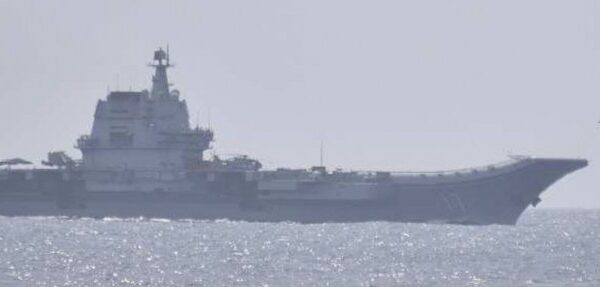
US defense bill spends big against China’s maritime claims
U.S. President Joe Biden on Friday signed into law an $886 billion defense bill that includes US$16 billion to deter China’s expansive maritime claims and approves exemptions for Australia and the United Kingdom to buy American defense technology without licenses. The 2024 National Defense Authorization Act was passed by the Senate on Dec. 18 in a 87-13 vote and by the House on Dec. 19 in a 310-118 vote, after a compromise removed supplemental funding for Ukraine along with contentious abortion and transgender provisions. Senate Majority Leader Chuck Schumer, a Democrat from New York, last week called the compromise “precisely the kind of bipartisan cooperation the American people want from Congress.” Biden said on Friday that parts of the compromise “raise concerns” but that he was “pleased to support the critical objectives” of the bill. The legislation “provides the critical authorities we need to build the military required to deter future conflicts, while supporting service members and their spouses and families,” Biden said. Maritime deterrence The bill includes $14.7 billion for the Pacific Deterrence Initiative, well above the $9.1 billion requested by the Pentagon. The project, defense officials say, will help bolster U.S. defenses in Hawaii and the Pacific territory of Guam to increase “deterrence” efforts against China. A fighter plane takes off from the Chinese aircraft carrier Shandong in the Pacific Ocean, south of Okinawa, April 9, 2023. The Pentagon’s Pacific Deterrence Initiative will increase “deterrence” efforts against China. (Japan’s Ministry of Defense/AFP) Bryan Clark, a senior fellow at the Hudson Institute and expert in naval operations, said the “big increase” in funds would help by “improving the resilience and capability of U.S. and allied forces in the Indo-Pacific.” “I expect the increased PDI spending authorized in the NDAA will focus on defense of Guam, improved networking and data integration for U.S. forces in the Indo-Pacific, and accelerated efforts to posture U.S. ground troops in the region,” Clark told Radio Free Asia. A further $1.3 billion is earmarked specifically for the Indo-Pacific Campaigning Initiative, which a Senate Armed Services Committee statement said would fund “increased frequency and scale of exercises, freedom of navigation operations, and partner engagements” as China ramps up its claims of sovereignty. The 2024 bill also authorizes the biggest pay boost to military personnel in two decades, with a 5.2 percent overall bump, and increases the basic allowance for troops and housing subsidies. AUKUS It’s not only U.S. military bases and personnel in the Indo-Pacific that are receiving a large funding boost next year, though. The 2024 bill also approves the sale of nuclear-powered submarines to Australia and exemptions for Australian and British firms from the need to seek licenses to buy U.S. defense technology. The two provisions – known as “Pillar 1” and “Pillar 2” of the AUKUS security pact between Australia, the United Kingdom and the United States – have proved controversial, with some Republicans in Congress questioning Pillar 1 and some Democrats opposing Pillar 2. Republicans expressed concerns about the ability of shipyards to supply Australia with submarines by the 2030s amid massive building backlogs that have left the U.S. Navy waiting on its own orders. The Virginia-class attack submarine New Mexico undergoes sea trials in the Atlantic Ocean, Nov. 26, 2009. (U.S. Navy via AFP) Democrats, meanwhile, said they were worried that exempting Australian businesses from the need to seek licenses could open up an avenue for Chinese espionage to procure sensitive U.S. technology. But in the end the provisions passed with bipartisan support – even if the important licensing exemptions remain conditional on Australia and the United Kingdom putting in place “comparable” export restrictions. Rep. Raja Krishnamoorthi, a Democrat from Illinois and the ranking member of his party on the House Select Committee on China, said that the approval of both pillars of AUKUS would be a boon to U.S. efforts to counter the Chinese Communist Party’s maritime claims. “By authorizing the sale of up to three Virginia-class submarines to Australia, and simplifying the process for sharing advanced technologies between our countries, we are taking an important step in strengthening key U.S. alliances and working to maintain a free and open Indo-Pacific region in the face of CCP aggression,” he said. Australian Defense Minister Richard Marles said that the passage of AUKUS meant that Australia, the United Kingdom and the United States are “on the precipice of historic reform that will transform our ability to effectively deter, innovate, and operate together.” Australia’s ambassador to Washington, Kevin Rudd, said earlier this year he foresees a “seamless” defense industry across the AUKUS member states in coming decades if the security pact succeeds. Other measures The bill also establishes a new program to train and advise Taiwan’s military, and funds the Biden administration’s new “Indo-Pacific Maritime Domain Awareness Initiative,” which also is aimed at deterring China’s vast claims of maritime sovereignty. U.S. Assistant Secretary of Defense for Indo-Pacific Security Affairs Ely Ratner said earlier this month would equip American allies across Asia and the Pacific “with high-grade commercial satellite imagery that allows them to have much more visibility into their littorals.” Assistant Secretary of Defense for Indo-Pacific Security Affairs Ely Ratner, seen at Senate hearing earlier this year, says the U.S. will give allies across Asia and the Pacific “high-grade commercial satellite imagery.” (Amanda Andrade-Rhoades/Reuters) Rep. Mike Gallagher, a Republican from Wisconsin and the chairman of the House Select Committee on China, said the bill was suitably focussed on the biggest threats currently facing the U.S. military. “We are in the window of maximum danger when it comes to a conflict with China over Taiwan,” Gallagher said after the House passed the bill. “Ensuring our military has the resources to deter, and if necessary, win such a conflict must be our primary focus in Congress.”
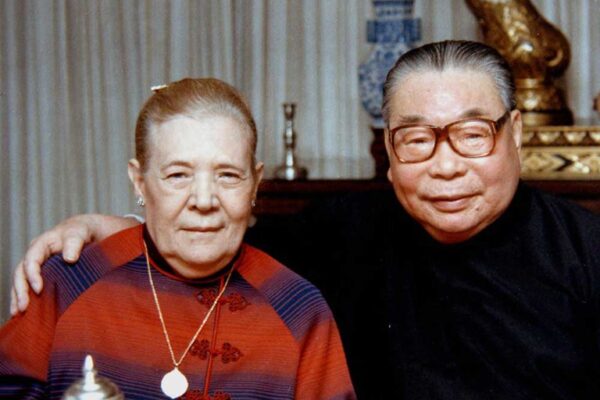
The limits of a Russia-China partnership that claims to have none
Three weeks before Russian tanks rolled into Ukraine last year, President Vladimir Putin traveled to Beijing for the opening ceremony of the Winter Olympics hosted by Chinese President Xi Jinping – an event shunned by Western leaders. In a 5,300-word joint statement issued the same day, Xi and Putin said their friendship had “no limits” – a declaration that caused a wave of unease in the West. It signaled that the world’s two preeminent authoritarian powers were making common cause. Beijing was also Putin’s first overseas visit outside the former Soviet Union in October since an arrest warrant was issued by the International Criminal Court against him for war crimes in Ukraine. In recent years, the China-Russia relationship has deepened as the two nations have sought a new world order against their common rival, the United States. However, since the war began, China has avoided providing direct military aid to Russia. Bilateral ties between the two powers are more complex and nuanced than meets the eye. Moscow’s association with China has a long and storied past that pre-dates the rise of the Chinese Communist Party to power in Beijing seven decades ago. Belarus-born Chiang Fang-liang poses with her husband, former Taiwan President Chiang Ching-kuo, March 15, 1985. Credit: AFP Kuomintang’s Soviet bride In the early afternoon on Dec. 15, 2004, Chiang Fang-liang – widow of former Taiwanese President Chiang Ching-kuo – died of respiratory and cardiac failure at a hospital in Taipei at age 88. She had lived a quiet, lonely life as a member of Taiwan’s first family. Her husband and three sons all passed before her. Born Faina Vakhreva in the Russian Empire, she was a member of the Soviet Union’s Communist Youth League and met her future husband when they both worked at a factory in Siberia. They married in 1935. A few years before that, Chiang’s father, Generalissimo Chiang Kai-shek, led the Chinese nationalist party Kuomintang to power in mainland China. Yet in 1949, the victory of the Communists drove the Chiang family and their government to retreat to the island of Taiwan, where Fang-liang lived and died. The Soviet Union, and Russia afterwards, have had little contact with Taiwan, but the Chiang family’s Russian connection served as a reminder of how much influence the Soviets once had over the politics across the Taiwan Strait. Chiang Ching-kuo arrived in the USSR aged 15 and spent 12 years there. He embraced the life of a Soviet Marxist, even adopted a Russian name – Nikolai Vladimirovich – after Vladimir Ilyich Lenin, the first leader of the USSR. The Kuomintang, founded in 1912 by Sun Yat-sen, for a long time received support and aid from the Soviet Union. However, during the Chinese Civil War (1927-1949) the Soviets turned to support the Communists who defeated the Nationalists and established the People’s Republic of China. Chiang Fang-liang is seen with her husband, former Taiwan President Chiang Ching-kuo, and their children in an undated photo. Credit: AFP/KMT In his memoir “My Days in Soviet Russia,” Chiang Ching-kuo recalled his time as being “completely isolated from China, I was not even allowed to mail a letter,” and those long years were “the most difficult” of his life. All his requests to return to the mainland were rejected by the authorities, according to Russian historians Alexander Larin and Alexander Lukin, as Chiang was virtually held hostage by Lenin’s successor as Soviet leader, Joseph Stalin. Chiang and his small family were allowed to leave the USSR in 1937 when in China the Kuomintang and the Communists formed a new alliance to fight against a Japanese invasion that presaged World War II. That was a lucky escape for them as the Soviet country was undergoing a period of extreme political repression known as the Great Purge, during which hundreds of thousands of Stalin’s political opponents were removed and eliminated. From then until her final days, Chiang’s Russian wife would never set foot in her motherland again. The years in the Soviet Union led Chiang Ching-kuo “to examine socialism with a more critical eye, and contributed to his evolution towards anti-communism,” argued Larin and Lukin, who said that the failure of the Soviet economic system played a part in Taiwan’s transition to market reforms under Chiang’s premiership during the 1970s. And not only in Taiwan, “eventually, the Chinese communists in mainland China arrived at the same conclusion” about the Soviet economic model, according to the Russian authors. “Deng Xiaoping, the architect of mainland Chinese economic reforms, was a classmate of Chiang … and had a similar although much shorter experience in the USSR,” they wrote. Good neighbors From the 1960s to the 1990s, the Sino-USSR relationship was marked by turbulence, including a seven-month border conflict in 1969. Mao Zedong’s China condemned Moscow for “betraying communism” while the Soviet Union withdrew all economic assistance to Beijing. It only warmed up after Mikhail Gorbachev became the general secretary of the USSR Communist Party and initiated the political and social reform called perestroika. After the Soviet Union dissolved, China recognized the Russian Federation as its legal successor on Dec. 24, 1991. Moscow and Beijing signed a Treaty of Good-Neighborliness and Friendly Cooperation 10 years later, paving the way for a new chapter in their special partnership. Soviet leader Mikhail Gorbachev [right] gestures as he talks with Chinese leader Deng Xiaoping during a meeting in 1989 in Beijing. Credit: Boris Yurchenko/AP A joint statement on the 20th anniversary of the treaty in 2021 said that Russian-Chinese relations “have reached the highest level in their history.” “The Russian-Chinese relations are based on equality, deep mutual trust, commitment to international law, support in defending each other’s core interests, the principles of sovereignty and territorial integrity,” it said. Officially, Sino-Russia ties are described as a “comprehensive partnership and strategic interaction in the new era,” according to the Russian Ministry of Foreign Affairs. China has been Russia’s largest trading partner since 2010, with two-way trade reaching US$140.7 billion in 2021 and $134.1 billion in…

